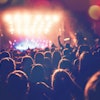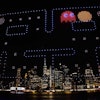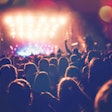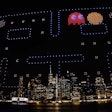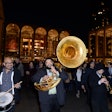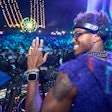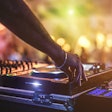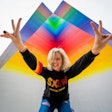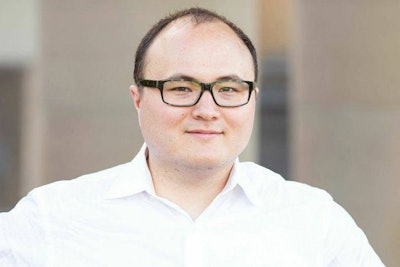
In his book Captivology: The Science of Capturing People’s Attention, author Ben Parr dives into the science and psychology behind attention—how it works and why we pay attention to certain people, products, and ideas and not to others. Parr, a former co-editor at Mashable, is a general partner at DominateFund, an early-stage venture fund. We asked him about strategies to capture and maintain attention, and how that can impact the design of meetings and events.
Most people feel busier than ever nowadays. Has that affected our ability to pay attention? Is it more difficult to be attentive now than it was a few decades ago?
I think the competition for attention has changed over the last few years. I think the fundamentals of how we pay attention haven’t changed. We still have the same hunter-gatherer instincts that make us switch our attention. But it’s not the same kind of world. In the old days we’d be searching for either threats or food. Nowadays we don’t have that—we don’t have a saber tooth tiger to worry about, we don’t have to forage for food—but we have the same types of behaviors. And that affects the ways we pay attention. Technology plays a huge part in this whole thing. Technology has made it easier to create content, and the amount of information we are creating is growing exponentially. In 1986, the average human being was exposed to about 40 newspapers worth of information on a daily basis. By 2006 that number had grown to about 170 newspapers. This last year the average person was exposed to 70 DVDs worth of information on a daily basis. We can only pay attention to so many things. Paying attention to one thing at a time is what we are good at. Once we split our attention, we get worse. So there is more competition for the same 24 hours. Multitasking exists, but nobody is more efficient multitasking than they are single-focused and the research shows this.
How does this impact event design? For example, should planners be encouraging attendees to share content on social media, or is it better to ask them to put the devices away?
It depends on your goals. People will be a little distracted if they are looking at their phones, but they may also encode the information better if they are live tweeting the entire thing. For speakers, do you want them to absorb the information better or promote further? That’s the balance you have to decide for yourself. I think the bigger issue is that lots of presentations are filled with bullet point slides, and bullet points are the least effective way to deliver information to people.
Why is that?
Divided attention is the enemy of attention. When you have lots of bullet points on a slide people are dividing their attention between reading bullet points and listening to the speaker. It’s almost always ineffective and not very engaging for the audience. The best speakers have very few, if any, bullet points. They use imagery to back up what they are saying.
Can you share some more tips related to attention at events?
The more tired audiences are the less likely they are to disseminate new information and make decisions. Typically the most attentive audiences are for the first slot of the day and the first slot after lunch. So if you want people to absorb information those are the best times to have. Another is a tip David Copperfield gave me: You have to find a way to violate and surprise your audiences’ expectations early. Make them know this isn’t the typical conference or typical presentation. When I speak, I throw a confetti cannon early on to emphasize one of my points about attention, but it changes the game because they are thrown off. You want to throw people off. Also, emotional storytelling trumps statistics. If a speaker is listing a lot of statistics he’s less likely to get you to make a donation versus if he told a story of someone affected. Smart charities do this all the time. Instead of talking about how they help this many people, they tell the story of this girl who was helped by the charity. That’s a more compelling story because we can put our feet in their shoes.
In your book, you use the metaphor of building a fire to describe the stages of attention. Tell us more about that.
In my model of attention there are three stages: There’s immediate attention, short attention, and long attention. And they correspond with how you build a bonfire. The first stage is the spark, the ignition of attention. That’s what I call immediate attention. It’s the automatic reaction we have to something. It’s when we first turn our heads when we hear a gunshot or a loud sound. It’s automatic, and it’s designed to protect us from harm. The second stage is short attention, which is what I call the kindling—when the fire is just getting started. It’s that first burst of short-term concentration, when we start concentrating on a phone call, a movie, a book. It’s easy for that to get wiped out and switch if you don’t build it up and have something compelling. The final stage is long attention. That’s when we are truly paying attention over the long-term and that’s the bonfire part of the fire where the logs keep on going all night. That’s the stage you want to get to. But you can’t start out with just a big bonfire. You have to go spark, kindling, and then bonfire.
[PULLQUOTE]
You describe seven “captivation triggers” that can be used to get people to pay attention in some way across those three stages. Can you briefly describe each of those?
Automaticity: It’s using colors and symbols that automatically change and direct our attention.
Framing: How you frame something changes how we view it and how we pay attention. One way you see events do it is scarcity—"there’s only 35 tickets left at this price." That can work because we do value scarcity. But one key aspect is we value things that are scarce because of outside forces and not because of popularity. So if it’s scarce because it’s popular, that’s not a reason, but if it’s scarce because the venue will not fit any more, it will be more likely people will value that ticket.
Disruption: We pay attention to people and things that violate our expectations. That’s great for immediate attention.
Reward: We pay attention to intrinsic and extrinsic rewards. Swag bags are extrinsic rewards and those do capture our attention over the short term, but the intrinsic rewards, the ones with self-satisfaction and purpose, those really make us pay attention. I went to a conference where I got a personalized bottle of 12-year Jameson [whiskey] with my name on it. I’ll never forget that. It was acknowledging me. It was a more intrinsic reward.
Reputation: This is very important. Events need to find experts and leaders to speak and draw people in and need to establish that those who are speaking are experts. We pay attention to experts with incredible vigor. In fact many studies find when we are listening to an expert the decision-making centers of our brain shut down because we are listening to them and we trust experts.
Mystery: We pay attention to mysteries, to incomplete story lines. So integrating a mystery, a surprise, can draw attention.
Acknowledgement: We pay attention to people and things that acknowledge us and validate us.
Can you share another example of using a trigger—for example, at the ignition stage?
I talk a lot about this in the automaticity trigger—how certain colors, sights, sounds, and symbols automatically change the way we behave. For example, if you are a hitchhiker on the side of the road and you want to have the best chance of being picked up, red is usually the best color. There have been scientific studies that found this out. And the reason red is most effective is because of the romantic associations we have with it. In fact if you put a big red border around a face the opposite gender will rate that person as several points more attractive. It’s the same reason you see red and orange buttons on a website. They get the highest click through rate because they have the highest contrast with their surroundings. So there are certain different things you can do with color, sights, and symbols that both change the way we pay attention and affect the way we assess something. For example orange in one study was found to have a high correlation with excitement but a very low correlation with confidence. So if you are an exciting brand, orange and yellow are good colors to use. If you are going for a competent brand, then blue and teal are much better choices.
So the goal is to get to that bonfire, to create the long-term attention. What does that look like?
Some brands are really good and some are terrible at it. There is so much noise out there. Some brands do a really good job of making it to a point that they have long attention and anything they do gets covered, like Google and Apple. They have these positive connotations they’ve built over the years. Everyone knows what an iPhone is and everyone knows what Google is. It’s a matter of really understanding your audience and what they are looking for. Attention isn’t any good unless it leads to sales, conversions, votes, things like that. You can have a lot of attention but if it doesn’t convert to your goal it was useless.

